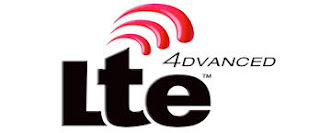What is GSM, CDMA & LTE :- MOBILE NETWORKING BRIEFED
CDMA:-(Code Division Multiple Access. )
CDMA have developed by QUALCOM. CDMA is of two standards, IS-95 or CDMA One-a 2G digital service and its modern 3G successor CDMA-2000. Presently all CDMA carriers are using CDMA-2000.
 In CDMA “3G data is provided by Evolution Data Optimized (EV-DO). EV-DO is technically on its 4th version Rev.C, but lion portion of carriers are using Re.A. Technically EV-DO has two disadvantages compared to UTMS/HSPA data on the GSM path. No. 1) CDMA phones have not been able to conduct simultaneous voice and data sessions. Means if you are unable to use cellular data while you are in a call. Even though this disadvantage have been fixed by new variant SV-DO the efficiency is limited compared to GSM. Because of this , CDMA carriers started to look for other options. WiMAX network as “4G” introduced by Sprint is one of that kind.
In CDMA “3G data is provided by Evolution Data Optimized (EV-DO). EV-DO is technically on its 4th version Rev.C, but lion portion of carriers are using Re.A. Technically EV-DO has two disadvantages compared to UTMS/HSPA data on the GSM path. No. 1) CDMA phones have not been able to conduct simultaneous voice and data sessions. Means if you are unable to use cellular data while you are in a call. Even though this disadvantage have been fixed by new variant SV-DO the efficiency is limited compared to GSM. Because of this , CDMA carriers started to look for other options. WiMAX network as “4G” introduced by Sprint is one of that kind.
GSM (Global Systems for Mobile communications)
GSM was developed to replace the analog networks . This was carried out by European Telecommunications Standards Institute. In one decade (Since 1990) GSM become unquestionable standard of worldwide communications other than few localized exceptions. GSM devices use a Security Identity Module. This chip card contains the international Mobile Subscriber Identity (IMSA) number, carrier information and owners contact information. If the phone is not locked by the carrier the phone can migrate easily between carriers.
AT &T and T-Mobiles is based upon GSM networks. For others either GSM is the dominant or sole cellular technology available. Its acceptance as a dependable technology together with the presence of SIM slots to carry cheap local SIMs made best technology suited for travel. GSM possesses inherent ability to for using cellular data and calling at the same time unlike CDMA.
LTE:
(Long Term Evolution) is a part of GSM path, can be considered as the only cellular technology for the future. It has been introduced in data form by most carriers especially in Verizon also. Voice over LTE (VoLTE) will ultimately take over voice calls. LTE even though not become fully equipped , expected to be fully functional in the near future also comes in two versions: Frequency –Division Duplexing (FDD) used in the west, and Time-Division Duplexting (TDD). If the carrier is using sufficient band width the LTE will be faster. But as the telecom providers have are still continues to charge as per the quantity of the data received, there is a great chance to incur heavy bills.
HSPA:-
HSPA is the set of technologies that enables 3G/WCDMA operators to upgrade their networks to run broadband speeds. HSPA includes HSDPA (High speed Downlink Packet Access), HSUPA (High Speed Uplink Packet Access) and HSPA+.
 Unlike may other mobile broadband technologies , HSPA supports the very efficient provision of voices services in combination with mobile broadband data services.
Unlike may other mobile broadband technologies , HSPA supports the very efficient provision of voices services in combination with mobile broadband data services.
NETWORK TECHNOLOGY OF THE POPULAR MOBILES RECENTLY RELEASED
SAMSUNG GALAXY S7: GSM/HSPA/LTE
HTC M One10 : GSM/HSPA/.LTE
HUAWEI P9 MOBILE: GSM/HSPA/LTE
LG G5: GSM/HSPA/LTE
HSPA:-
HSPA is the set of technologies that enables 3G/WCDMA operators to upgrade their networks to run broadband speeds. HSPA includes HSDPA (High speed Downlink Packet Access), HSUPA (High Speed Uplink Packet Access) and HSPA+.
 Unlike may other mobile broadband technologies , HSPA supports the very efficient provision of voices services in combination with mobile broadband data services.
Unlike may other mobile broadband technologies , HSPA supports the very efficient provision of voices services in combination with mobile broadband data services.NETWORK TECHNOLOGY OF THE POPULAR MOBILES RECENTLY RELEASED
SAMSUNG GALAXY S7: GSM/HSPA/LTE
HTC M One10 : GSM/HSPA/.LTE
HUAWEI P9 MOBILE: GSM/HSPA/LTE
LG G5: GSM/HSPA/LTE


No comments:
Post a Comment